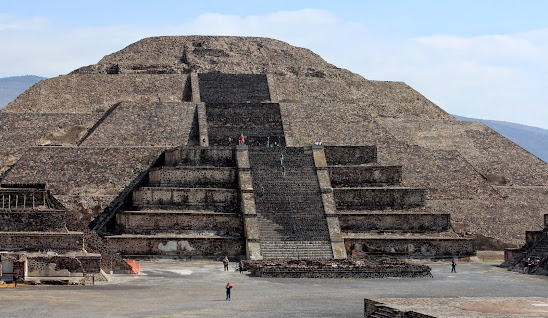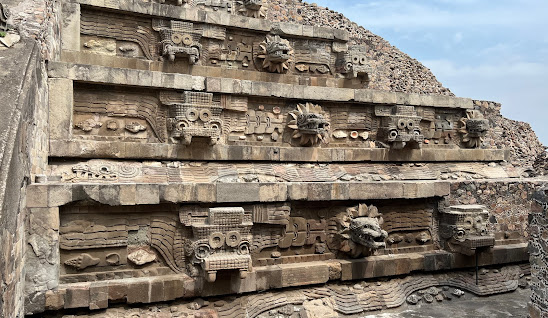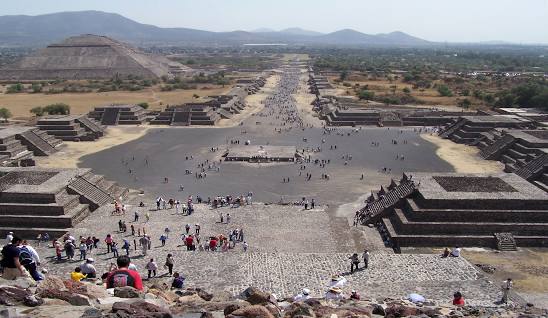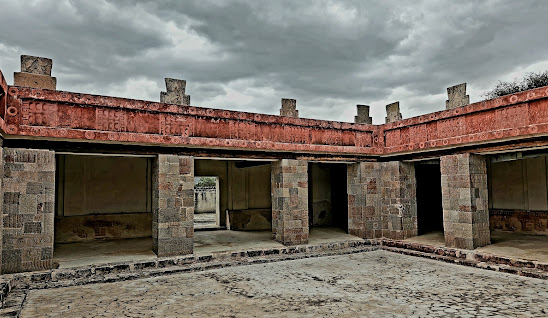Teotihuacán – one of the most important archeological sites of the world. Before falling into ruins, around 500 A.D. was the biggest city in pre-Columbian Americas, and one of the 6 largest cities in the world, inhabited for more than 125 000 people. Its name means “place where Gods were born”, Aztecs, who came later, after Teotihuacán collapsed believed that gods created the universe from there.
Its name resonates with awe and wonder, stands as a testament to the architectural and cultural achievements of ancient Mesoamerica. Often referred to as the “City of the Gods,” Teotihuacán is one of the most remarkable archaeological sites in Mexico, captivating the imagination of historians, archaeologists, and tourists alike. This ancient city, shrouded in mystery, offers a glimpse into the splendor and complexity of pre-Columbian civilization.
Teotihuacán: historical context
Located just 30 miles northeast of modern-day Mexico City, Teotihuacán emerged as a flourishing metropolis around 100 BCE and reached its zenith between 150 and 450 CE. It was a hub of culture, trade, and religion, influencing neighboring civilizations and serving as a cultural melting pot for various Mesoamerican peoples.
Teotihuacán: city layout and architecture
The urban planning of Teotihuacán is a marvel in itself. The city was meticulously designed with a grid-like pattern, showcasing a remarkable understanding of urban organization. The central axis, known as the Avenue of the Dead, is flanked by monumental structures, including the Pyramid of the Sun, the Pyramid of the Moon, and the Temple of the Feathered Serpent (Quetzalcoatl). These structures not only served as ceremonial and religious sites but also displayed architectural precision and mastery.
Pyramid of the Sun: a monumental wonder
At the heart of Teotihuacán, the Pyramid of the Sun stands tall as one of the largest pyramidal structures in the world. Its construction required immense labor and engineering acumen. The pyramid’s alignment with celestial events, such as equinoxes, reflects the deep astronomical knowledge possessed by the city’s builders. Climbing to the summit offers a breathtaking panoramic view of the ancient city and its surroundings, evoking a sense of connection to the past.
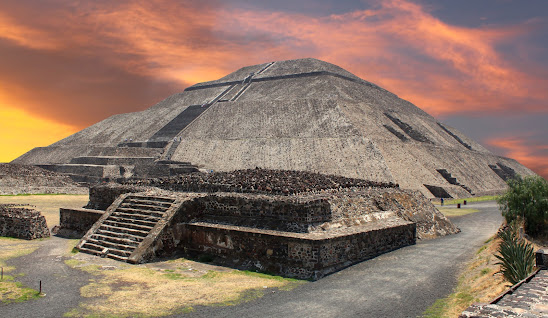
Art and culture
Teotihuacán’s influence extended beyond its architecture. The city’s artistic achievements, seen in murals, pottery, and other artifacts, provide valuable insights into daily life and cosmological beliefs of its inhabitants. The murals, often found in residential compounds, depict scenes of daily activities, rituals, and deities, showcasing the vibrant artistic expressions of the Teotihuacán people.
Teotihuacán: mystery and decline
Despite the wealth of information gleaned from Teotihuacan’s remnants, many aspects of its history remain shrouded in mystery. The sudden decline and abandonment of the city around the 7th century CE continue to puzzle historians. The reasons behind its downfall, whether due to social upheaval, environmental factors, or external influences, are still debated among scholars. The collapse of the city was probably related to the severe droughts in 6th century causing famine and deaths.
Preservation and tourism
Teotihuacan’s significance has earned it UNESCO World Heritage Site status, emphasizing the need for its preservation and careful study. The site’s popularity among tourists highlights its enduring allure, with visitors from around the world drawn to its enigmatic past and awe-inspiring structures. However, the increased foot traffic also poses challenges for conservation efforts.
Teotihuacán stands as an eternal enigma, a beacon of the achievements of a once-mighty civilization that flourished in the heart of Mesoamerica. Its monumental architecture, intricate artwork, and rich cultural heritage serve as a window into a bygone era. As we walk in the footsteps of ancient inhabitants along the Avenue of the Dead, we are reminded of the ceaseless quest to uncover the secrets of the past and understand the intricate tapestry of human history.
Opening hours:
Tuesday – Sunday 9:00 – 17:00
Entrance fee: 64 MXN
How to get there from Casa de Chiles?
Take the metro from Chapultepec station direction Pantitlán. Change at Balderas for the line no 3 direction Indios Verdes, then 5 stops later change in la Raza for line no 5 direction Politechnica. Get one stop later in the station Autobuses del Norte. Get off and walk straight to the bus terminal (Terminal del Norte). Once inside, ask for directions or get to the gate 8, where you will see the inscription “Autobuses Teotihuacán“, with a blue pyramid sign. A return ticket costs around 90 MXN. Travel lasts about 1 hour. Busses are leaving with the frequency of 20 min. Do not forget a hat and a sun screen…

